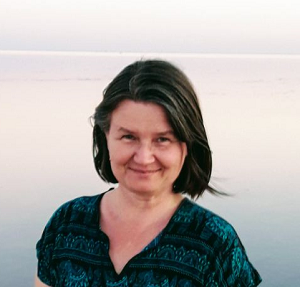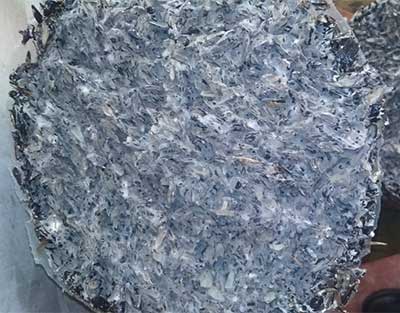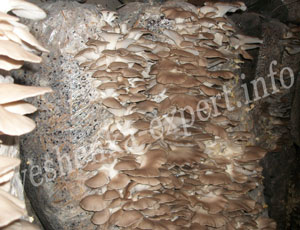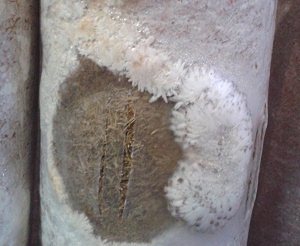
In this article, we will analyze when does it start fruiting mushrooms and when to transfer mushroom blocks from the incubator to the growing room.
Table of Contents:
The substrate changes color during overgrowth of the mycelium from pale white to dense white. When the block has become completely white, it becomes denser, as the hyphae of the mycelium intertwine with each other. This means that the mycelium has completely colonized the substrate.
Be sure to wait until the substrate is completely overgrown and becomes monolithic!
Determination of density comes with experience.
See also how a living, well-grown block differs from a substrate covered with a white mass called "stroma" in this article.
If the bag turned white and became dense to the touch, and the slots are well fluffed up, you can transfer it without waiting for the mushroom pins to appear.
After the block has whitened and compacted, a compaction appears in the slots, which is called “hyphal knots”. And this indicates that mycelium is ready to fruit.
In these photos you see a well-grown substrate.


When primordia appear, the batch must immediately be taken out to the growing room. The signal for transfer is the formation of 1-2 primordia per 5-10% of the bags. They are called so - signal primordia. Avoid mass pinning in the incubator.
Incubator has a high content of carbon dioxide, and if the bags with the substrate are not moved in time, the mushrooms pins will die. But it will be visible on the second, and even the third day. Therefore, many mushroom growers do not believe that mushrooms suffocated due to high CO2 levels.
Such primordia look like withered or dead. They become yellow and wilted. Be sure to pick such dead mushrooms so that the infection does not settle on them. From the same holes, a normal cluster will begin to grow in 4-5 days.
How quickly oyster mushrooms grow after the appearance of primordia depends on the microclimate in the growing room.
At the optimum temperature for this strain (at 14-17 degrees), the maturation of fruiting bodies takes about 5-6 days. At 20 - 22C, primordia grow in 1-2 days.
In short, we can say that oyster mushrooms will begin to bear fruit in an average of 21-24 days.
Although it happens that a month has passed after the blocks were made, but there are no mushrooms.
How long the mycelium colonizes the substrate depends on several factors.
There are early ripening strains, the mycelium of which overgrows in 9-10 days, subject to favorable conditions.

On the 10-11th day, primordia already appear in such strains, and the mushrooms grow for 2-3 days.
Such is the summer strain of pulmonary oyster mushroom pph (Pleurotus pulmonarius), you can read about it and other strains in this article.
There are strains in which the mycelium matures from 16 to 20 days. When buying mycelium, ask for a technological map, which indicates the ripening time and the necessary conditions for the growth of mushrooms.
With the right ratio of essential nutrients and trace elements, the mycelium grows very quickly. It gives primordia two to three days earlier than the substrate, which is not balanced in composition.
With other equal conditions, the substrate from sunflower husks gives primordia a couple of days earlier than the substrate from straw or its mixture with hay.
High-quality heat treatment of plant raw materials is also important: if the mycelium does not spend energy on fighting competitors and growing into wetted areas, the substrate overgrows quickly, within the time specified in the strain data sheet.
My author's articles began to be stolen, so if you are not on my site now, type «veshenka-expert.info» in the search engine, go to my site.
Grain spawn must be purchased from certified laboratories. If you make grain spawn yourself, you need to properly culture the strain. Otherwise, a moment may come when the mycelium overgrows very quickly, but practically does not form generative organs - that is, fungi.
How much grain spawn is needed? The application rate of mycelium is from 3 to 5 percent of the weight of the substrate. The more growth points, that is, grains, and the more thoroughly they are mixed with the substrate, the faster the mycelium grows and forms primordia.
They will appear two or three days earlier. But this does not affect the weight of harvested mushrooms.
At my enterprise there was a tunnel where 10-11 tons of substrate were pasteurized. The substrate was a mixture of barley and wheat straw with the addition of 4-5% alfalfa hay.We used mycelium grown on oats.
We usually put 360 grams of grain spawn into each block, which is 3%.
Lower than 2.7%, we did not try to contribute even out of curiosity. Since blocks even with such a percentage of mycelium overgrown for 1-2 days longer than with 3%.
 The cultivation passport specifies not only the dates for the start of fruiting, but also all the conditions that must be observed during the incubation period.
The cultivation passport specifies not only the dates for the start of fruiting, but also all the conditions that must be observed during the incubation period.
When the temperature in the incubator is below 14 degrees, overgrowing is extremely slow, sometimes primordia are formed on the 35-40th day, and the substrate overgrows with yellow spots.
If the air humidity in the incubator is below 80%, the perforations (slots) become dry and the appearance of primordia is delayed.
In order for mushrooms to be beautiful and heavy, all microclimate conditions must be optimal, not just one. If you have optimal temperature and humidity, but high levels of CO2, problems are bound to arise.
Imagine that one of the climate parameters shifts from the optimal one. Any parameter can be considered - humidity, flow rate, or temperature.
What can you do? There are two options.
First: you return this parameter to normal.
The second option is to adapt all other conditions to this bias factor.
Often we just have to do it, especially in winter.
For example, if you see that your boiler is not able to heat the grow chamber to the optimum temperature in severe frost, adjust the fresh air supply and humidity.
Otherwise, the mushrooms will not be able to breathe due to condensate and/or will draw out their legs from excess carbon dioxide.
What humidity should be kept in the incubator, and how to regulate it, read here.
Details about the temperature in the incubator.
The mycelium grows, increases its mass, but consumes the nutrients of the plant mixture - due to this, it grows.
In addition, it breathes, releasing water and carbon dioxide from the substrate block.
Due to this, the bag loses weight. Under the correct conditions described above, this is a small loss - 2-3% of the initial weight.
If the air humidity is low, the losses can be more significant, up to 10-15%.
What smell should a mushroom bag have? Only the steamed substrate has a characteristic smell of steamed raw materials. Moreover, it seems to me, and to many mushroom growers, that the smell in the incubator is much more pleasant than a large pile of steamed straw or husks on the inoculation table.
After four to five days of mycelial growth, the smell changes to a slightly sweetish, with a milky tint.
I had about 1000 even-aged bags in my incubator. On the sixth day after sowing, I slowly walked around all the rows, stopping at the place where the smell changed - it became sharp and unpleasant, and clearly "straw". In this place, I found a block without perforation - it happened that workers skipped one or two blocks when cutting perforations.
I cut them, and most often they overgrown, then yielding a crop. If there were foul-smelling spots under the film, we took them out and threw them into a pit with biohumus.
On days 7-8 (and on husks often a day earlier), my straw bags were emitting so much CO2 that it was difficult to stay in the incubator for a long time. It feels like there is simply nothing to breathe, as if you covered yourself with a blanket with your head. But, as I wrote above, in small incubators, where the substrate is of different ages, this is practically not felt.
